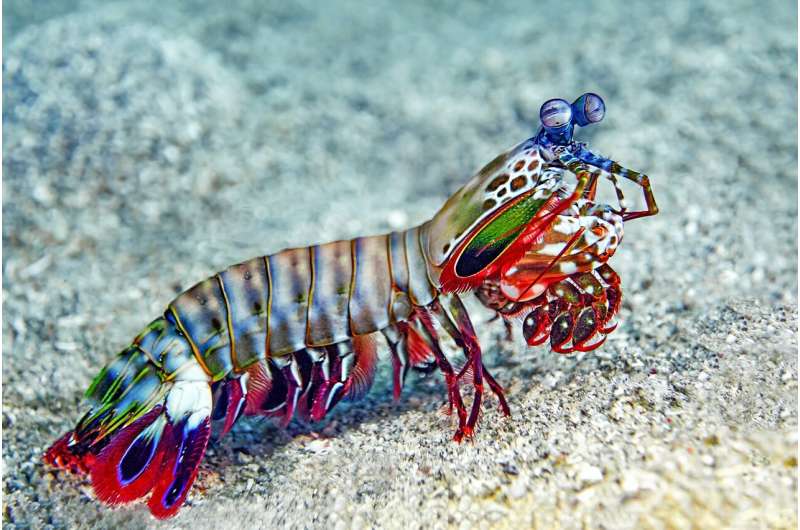Optimized multi-scale structure and chemical gradients in exoskeletons of mantis shrimp, hermit crabs

A research group led by Prof. Luo Tianzhi from the University of Science and Technology of China (USTC) of the Chinese Academy of Sciences, collaborating with Prof. Wang Zhengzhi's team from Wuhan University, explored the natural defenses in the tail spike of mantis shrimps and left chela of hermit crabs.
They revealed the chemical gradients from nanometer to centimeter and the correlation between micro-structure and mechanical properties. Also, they confirmed toughening mechanism and optimized structure principles through a 3D printing technique and finite-element analysis. The results were published in ACS Applied Materials & Interfaces and Acta Biomaterialia, respectively.
Nature endows many animals with hierarchical structural "tools" for defense and attack, which also inspires the researchers and engineers to design and fabricate bio-mimetic materials and structures with superior properties.
In these studies, the researchers found that the exoskeleton of mantis shrimps embraces four different layers, in which there are distinctive micro-structure and chemical characteristics.
The local mechanical properties of these layers correlate well with the micro-structures and chemical compositions, a combination of which effectively restricts the crack propagation while maximizing the release of strain energy during deformation. As a result, the whole toughness and strength is improved.
Additionally, the researchers fabricated many bio-mimetic structures of the tail spike by 3D printing, and verified that the combination of Bounligand structure with radially oriented parallel sheets greatly improves the toughness and strength during compression tests. This case guides high-performance composites fabrication towards a new path.
In the similar way, the left chela of hermit crabs is also naturally endowed with the optimized mechanical properties in against the compression and attack, which provides new ideas to sharpen the design in anti-attack structures.
More information: Shan Li et al. Optimized Hierarchical Structure and Chemical Gradients Promote the Biomechanical Functions of the Spike of Mantis Shrimps, ACS Applied Materials & Interfaces (2021). DOI: 10.1021/acsami.1c02867
Weiqin Lin et al. Multi-scale design of the chela of the hermit crab Coenobita brevimanus, Acta Biomaterialia (2021). DOI: 10.1016/j.actbio.2021.04.012
Journal information: Acta Biomaterialia , ACS Applied Materials and Interfaces
Provided by Chinese Academy of Sciences





















